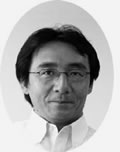 |
| |
| Program>Summary: Patho-epidemiologic study of cancers in atomic bomb survivors |
 |

|
Masahiro Nakashima, M.D., Ph.D.
Tissue and Histopathology Section, Atomic Bomb Disease Institute, Nagasaki University Graduate School of Biomedical Sciences |
| |
|
 |
| Patho-epidemiologic study of cancers in atomic bomb survivors |
|
Although it is epidemiologically revealed that an increased risk of cancer has still continued in the atomic bomb (A-bomb) survivors, the molecular mechanisms of carcinogenesis involved in survivors have remained to be clarified. The epidemiologic and molecular analyses of carcinogenesis in survivors require clinical data of individuals and biological materials with pathologic data of tumors. Thus, Survivorsユ Data Base (DB) in Nagasaki University, which has been collecting all sorts of clinical data in order to analyze health effects by irradiation for over than 30 years, can be an incomparably valuable data source for the study. By using this DB, we have found a higher incidence rate of multiple primary cancers (MPC) in survivors at a closer distance to the hypocenter since 1980s. The occurrence of MPC is considered to be a reflection of systematic exposure to carcinogens or of a predisposition to cancer. It is one of the most important problems which now confront us to solve the molecular mechanism of accelerated risk of cancer in survivors. Recently, we found the endogenous activation of DNA damage response in the epidermis of the survivors who were exposed to radiation at a closer distance to the hypocenter. It is suggested that a high susceptibility to DNA damage which has been induced by A-bomb radiation can predispose the development of cancer in the survivors as a late health effect of irradiation. |
|
|
|
|